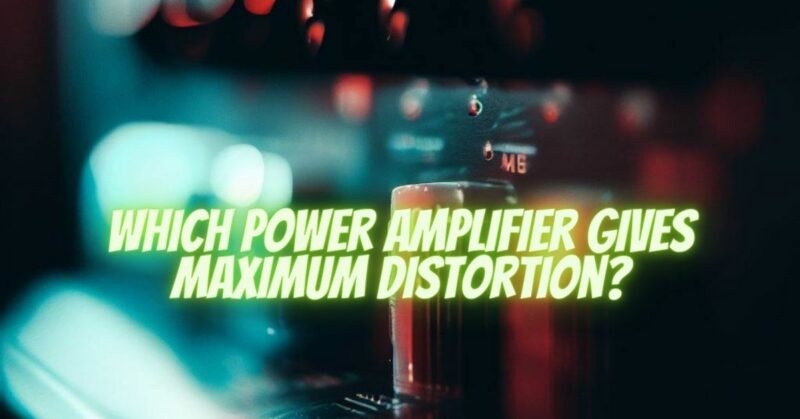Distortion is an undesirable artifact in audio amplification that can affect the fidelity and accuracy of sound reproduction. While no amplifier type is designed to produce maximum distortion intentionally, certain factors can contribute to higher levels of distortion in different amplifier designs. In this article, we’ll explore the different types of power amplifiers and their inherent characteristics related to distortion.
- Class A Amplifiers: Class A amplifiers are known for their low distortion characteristics. The constant bias current flowing through the output transistors helps minimize crossover distortion and maintain linearity, resulting in clean and accurate sound reproduction. Class A amplifiers typically exhibit very low levels of harmonic and intermodulation distortion.
- Class AB Amplifiers: Class AB amplifiers are commonly used in audio systems and provide a balance between efficiency and low distortion. These amplifiers operate in both Class A and Class B modes, where the bias current is reduced when the signal is low, allowing for power-saving operation. Class AB amplifiers can exhibit slightly higher levels of distortion compared to Class A, primarily due to the transition between the two operating modes.
- Class D Amplifiers: Class D amplifiers, also known as switching amplifiers, are highly efficient but can exhibit higher levels of distortion compared to Class A and Class AB amplifiers. These amplifiers utilize pulse-width modulation (PWM) to switch the output transistors rapidly on and off. The switching process can introduce distortion, particularly in the high-frequency range. However, advancements in design and feedback techniques have significantly reduced distortion in modern Class D amplifiers.
- Class H and Class G Amplifiers: Class H and Class G amplifiers are variations of Class AB amplifiers that aim to improve efficiency by employing multiple power supply rails. These designs dynamically adjust the supply voltage based on the input signal level. While Class H and Class G amplifiers can offer improved efficiency, they can introduce some additional distortion compared to Class A and Class AB amplifiers due to the switching and voltage transition processes.
- Comparing Distortion Levels: It’s important to note that the distortion levels in power amplifiers can vary depending on various factors, including the specific design, implementation, and quality of components used. While Class A amplifiers are often associated with low distortion, advancements in other amplifier classes have significantly reduced distortion levels. Modern Class AB, Class D, Class H, and Class G amplifiers can achieve distortion levels that are well within acceptable limits for accurate sound reproduction.
Conclusion:
While no amplifier type is designed to produce maximum distortion intentionally, different amplifier classes exhibit varying levels of distortion due to their inherent design and operating characteristics. Class A amplifiers are generally associated with low distortion, while Class AB, Class D, Class H, and Class G amplifiers can introduce slightly higher distortion levels. However, advancements in amplifier technology have allowed manufacturers to minimize distortion in all amplifier classes, ensuring accurate sound reproduction. When choosing a power amplifier, it’s important to consider other factors such as power efficiency, system compatibility, and personal listening preferences, in addition to distortion characteristics, to ensure optimal sound quality.


